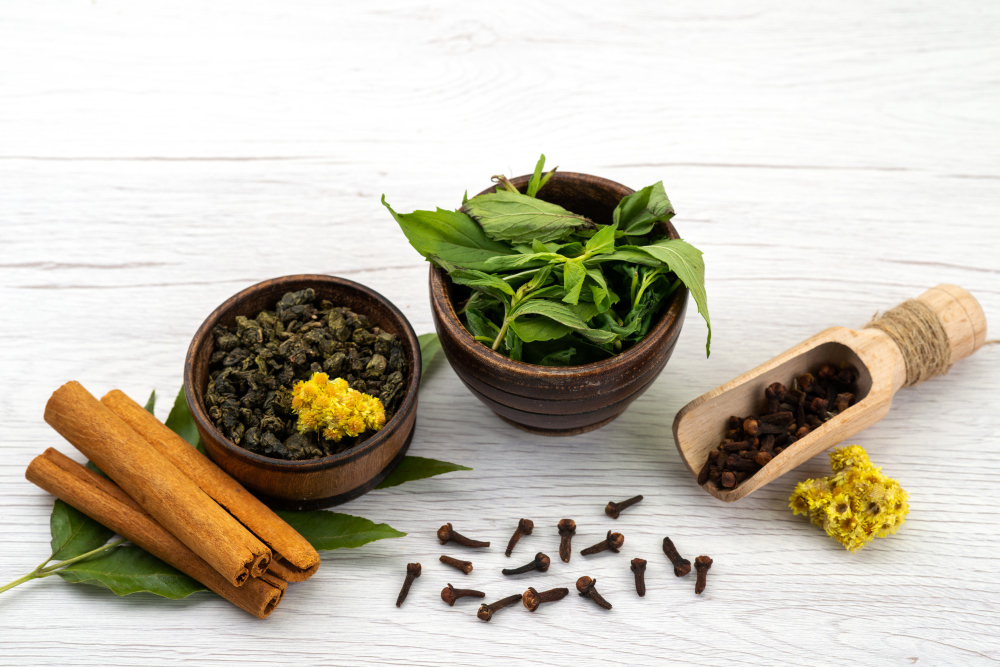
Pain is an inevitable part of life, and for centuries, humans have sought relief from various ailments. In the pursuit of well-being, there's a growing interest in natural alternatives, particularly herbal and plant extracts. These remedies, deeply rooted in traditional medicine, are gaining popularity as people seek effective solutions with fewer side effects than conventional medications.
Understanding Pain and Conventional Treatments
Pain comes in various forms, from acute to chronic, and the conventional methods of addressing it often involve pharmaceutical interventions. While these approaches have their merits, they also come with potential side effects and risks.
The Rise of Herbal and Plant Extracts
In recent years, there has been a notable shift towards natural remedies. This change is fueled by a heightened awareness of the side effects associated with prolonged use of conventional pain medications. People are increasingly turning to herbal and plant extracts for a more holistic approach to pain relief.
Common Herbal and Plant Extracts for Pain Relief
Turmeric and Curcumin: Nature's Anti-Inflammatory
Turmeric, a vibrant yellow spice, contains curcumin, a potent anti-inflammatory compound. Studies suggest that curcumin can rival the effectiveness of some anti-inflammatory drugs, making it a valuable natural option for pain management.
Willow Bark: Nature's Aspirin
Derived from the bark of the willow tree, this natural remedy has been used for centuries to alleviate pain and reduce inflammation. Willow bark contains salicin, a compound similar to aspirin, providing a natural alternative for pain relief.
Ginger: A Natural Analgesic
Known for its culinary uses, ginger also possesses analgesic properties. It can be effective in reducing muscle pain and soreness, making it a popular choice for those seeking natural pain relief.
CBD and Pain Management
Introduction to CBD and its Popularity
CBD, or cannabidiol, has gained widespread popularity for its potential therapeutic effects, including pain relief. Derived from the cannabis plant, CBD is non-psychoactive and is being explored as a natural alternative for managing various types of pain.
Exploring the Potential of CBD in Pain Relief
Research suggests that CBD may interact with the endocannabinoid system, influencing pain perception and inflammation. While more studies are needed, many individuals report positive outcomes when using CBD for pain management.
Arnica: A Natural Remedy for Bruises and Sprains
Arnica, derived from the Arnica montana plant, is renowned for its ability to reduce bruising and soothe sprains. This natural remedy can be a valuable addition to a holistic approach to pain relief.
Overview of Arnica and its Uses
Arnica works by stimulating white blood cell activity, reducing inflammation and promoting healing. It's particularly effective in addressing pain associated with injuries.
How Arnica Can be a Natural Solution for Specific Types of Pain
Whether you're dealing with a sports injury or the aftermath of a fall, Arnica's natural properties make it a go-to option for pain relief without the side effects of some conventional medications.
Devil's Claw: Nature's Anti-Arthritic
Discussing Devil's Claw and its Anti-Inflammatory Properties
Native to southern Africa, Devil's Claw has been used traditionally to address arthritis and inflammation. Its active compounds have been studied for their potential in managing joint pain and stiffness.
How it Can Aid in Arthritis Pain Relief
By inhibiting inflammatory pathways, Devil's Claw may offer relief to those suffering from arthritis. Its natural approach to addressing inflammation makes it a compelling choice for individuals seeking alternatives to pharmaceutical options.
Capsaicin from Chili Peppers: A Hot Solution for Pain
Explaining the Heat Therapy of Capsaicin
Capsaicin, the compound responsible for the heat in chili peppers, is not just for spicing up your meals. It's also utilized for its pain-relieving properties, particularly in topical applications.
Its Effectiveness in Topical Pain Relief
When applied to the skin, capsaicin can reduce the sensation of pain by depleting substance P, a neurotransmitter that sends pain signals to the brain. This unique approach makes capsaicin an interesting natural remedy for localized pain.
Kratom: The Controversial Herb
Discussing Kratom's Pain-Relieving Properties
Kratom, derived from the leaves of the Mitragyna speciosa tree, has gained attention for its potential analgesic effects. It interacts with opioid receptors, providing pain relief for some individuals.
Addressing the Controversies and Potential Risks
While some find relief with Kratom, its use is not without controversy. The potential for dependence and adverse effects has led to regulatory scrutiny. It's crucial for individuals to weigh the risks and benefits before considering Kratom as a pain management option.
Boswellia: Soothing Inflammation Naturally
Introduction to Boswellia and its Anti-Inflammatory Effects
Boswellia, also known as Indian frankincense, contains compounds with anti-inflammatory properties. It's been used traditionally to address inflammatory conditions, offering a natural alternative for those dealing with chronic pain.
How it Can be Beneficial for Chronic Pain Conditions
By inhibiting inflammatory enzymes, Boswellia may alleviate symptoms associated with chronic pain conditions such as osteoarthritis. Its natural and targeted approach to inflammation makes it an appealing choice for those seeking relief.
Valerian Root: Calming Nerves and Easing Pain
Exploring Valerian Root's Calming Properties
Valerian root has been used for centuries as a natural remedy for anxiety and insomnia. Its calming effects extend to easing nerve-related pain, making it a potential option for individuals experiencing pain due to nervous system issues.
Its Role in Reducing Nerve-Related Pain
Whether it's sciatica or general nerve discomfort, Valerian root's ability to promote relaxation may contribute to reducing pain. It's an option worth exploring for those seeking a natural approach to nerve-related discomfort.
Chamomile: Beyond Tea for Pain Relief
Overview of Chamomile's Anti-Inflammatory and Muscle Relaxant Properties
Chamomile, commonly known for its use in tea, possesses anti-inflammatory and muscle relaxant properties. Beyond a soothing beverage, it can be considered as a natural remedy for pain relief.
How it Can Aid in Pain Management
Chamomile's anti-inflammatory effects make it beneficial for conditions involving inflammation, such as arthritis. Additionally, its muscle relaxant properties may contribute to alleviating tension-related pain.
Choosing the Right Herbal Solution for You
Factors to Consider When Opting for Herbal and Plant Extracts
Selecting the right herbal remedy involves considering factors such as the type of pain, personal health history, and potential interactions with other medications. Consulting with a healthcare professional is essential for a tailored approach to pain management.
The Importance of Consulting with Healthcare Professionals
While herbal remedies offer natural alternatives, it's crucial to consult with healthcare professionals, especially if you have pre-existing conditions or are taking other medications. Their expertise can guide you in making informed decisions about incorporating herbal solutions into your pain management routine.
Balancing Traditional and Modern Approaches
Emphasizing the Complementary Role of Herbal Remedies
Herbal and plant extracts should be viewed as complementary to conventional approaches rather than replacements. Integrating traditional and modern methods can provide a well-rounded and effective strategy for pain management.
Encouraging an Integrative Approach to Pain Management
The key is to find a balance that works for you. Integrating herbal remedies into your pain management plan can offer additional options, potentially reducing the reliance on pharmaceuticals and their associated side effects.
Conclusion
In the quest for pain relief, the world of herbal and plant extracts offers a diverse range of options. From the anti-inflammatory powers of turmeric to the soothing effects of chamomile, nature provides alternatives worth exploring. However, it's essential to approach these remedies with caution, considering individual health factors and consulting with healthcare professionals for personalized guidance.
5 Unique FAQs
- Are herbal remedies safe for everyone?
- While generally considered safe, individual reactions can vary. Consult with a healthcare professional, especially if you have underlying health conditions or are taking medications.
- Can I use multiple herbal remedies together?
- Combining remedies may have synergistic effects, but it's advisable to consult with a healthcare professional to avoid potential interactions.
- How long does it take for herbal remedies to show results?
- The timeline varies, and consistency is key. Some may experience relief quickly, while others may require more time for the effects to manifest.
- Are there any side effects of using herbal remedies?
- While generally well-tolerated, some individuals may experience allergies or sensitivities. Monitor your body's response and seek professional advice if needed.
- Can herbal remedies replace prescription medications entirely?
- Herbal remedies can complement conventional treatments, but it's essential to work with healthcare professionals to determine the most effective and safe combination for your specific needs.





